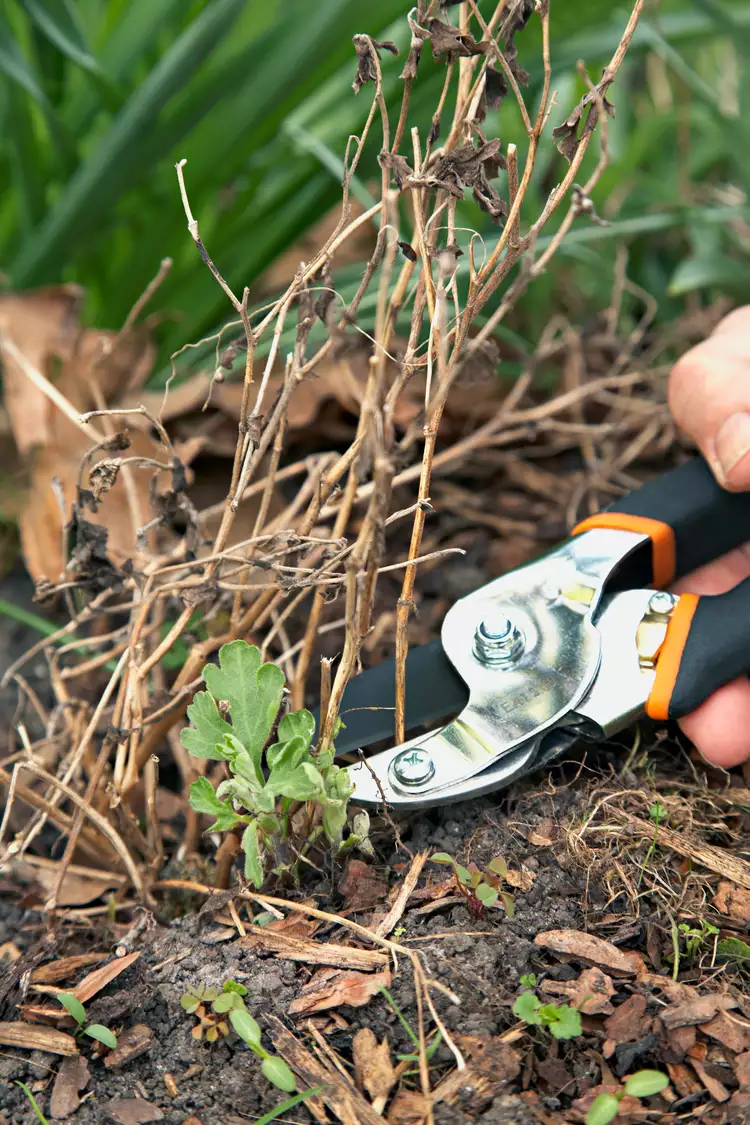How and When to Cut Back Mums for the Best Blooms

Chrysanthemums purchased in fall for decoration won’t need any pruning this season to be beautiful. The grower already did that for you months ago. Nor will your mums need cutting back for winter. However, if you plan on keeping them around in pots or garden beds for next autumn, here's how and when to prune mums to get the same mounded and colorful beauty year after year. These same tips will help you keep mums growing in your garden looking their best too.
Deadheading Mums
While the fall mums you purchased this year won’t need cutting back, they will need regular deadheading. Old, spent flowers should be removed to clean up appearances and encourage more flowering. Plants will try to reproduce (make seeds) until they are successful. Removing the old flowers before they become seed heads will "frustrate" your mum, and it will start over again with new flowers in its quest to form seeds.
Get in the habit of deadheading your mums a few times a week and it will only take a minute. Don’t let the entire plant’s worth of blooms get old, or the task will seem overwhelming.
When to Cut Back Mums
Most people buy mums in late summer for a splash of fall color, then toss them at the end of the season. However, garden mums are perennials in USDA Hardiness Zone 5-9 when properly cared for. The best time to prune mums in your garden is in spring to remove dead foliage. Before new growth has emerged, trim to within a couple inches of the soil surface. Remove all dead material that feels dried and brittle. If the mum stem bends instead of snaps, it is not dead and may come back.
If you plant those potted mums you used for fall decor in your garden in late autumn, they usually won’t make it through the winter because the roots won't have enough time to adapt to the new environment. However, garden mums planted in spring and summer have time to adjust and develop roots, so usually survive pretty well.
Tips for Pinching Mums
Pinching is what it sounds like: using your fingers to remove tender stem ends. It's not as drastic as cutting back; the goal is to encourage bushier growth and help control a mum's shape and size. This technique also can give you many more blooms per plant.
Mums left to themselves grow tall and “leggy” and may develop floppy stems later in the season, so pinching at the right times results in the mounded and dense shape we love for these flowering perennials. Mums grow at a rate of about 1.5 inches a week in all directions, up and outward. That won’t seem like much in the beginning, but toward the middle of the season, your mums will seem to surge in size.
Mums planted in spring or early summer can be pinched as follows:
- When the plant is about 6 inches tall, pinch off any existing buds using your fingers or scissors.
- At the same time, pinch non-budded growth tips off, removing a couple of inches of new growth. The plant will fork at the pinch point and create two stems to replace the one you removed.
- Repeat this process every 2-4 weeks until midsummer. You’ll want to let the plant start budding and blooming in time for the flowers to provide fall color. Pinching after mid-July could delay flowering.
- When pinching, remove growth to create a mounded shape. If in a pot, mums will look best when the foliage is trained to form a ball twice as wide as the top of the container.